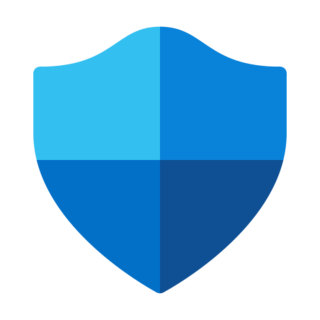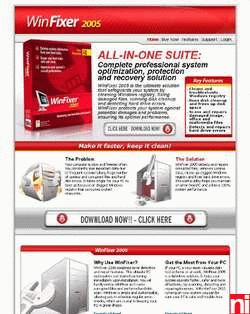
Malware is any software intentionally designed to cause disruption to a computer, server, client, or computer network, leak private information, gain unauthorized access to information or systems, deprive users access to information or which unknowingly interferes with the user's computer security and privacy. By contrast, software that causes harm due to some deficiency is typically described as a software bug. Malware poses serious problems to individuals and businesses on the Internet. According to Symantec’s 2018 Internet Security Threat Report (ISTR), malware variants number has increased to 669,947,865 in 2017, which is twice as many malware variants as in 2016. Cybercrime, which includes malware attacks as well as other crimes committed by computer, was predicted to cost the world economy 6 trillion dollars in 2021, and is increasing at a rate of 15% per year.

Antivirus software, also known as anti-malware, is a computer program used to prevent, detect, and remove malware.

Clam AntiVirus (ClamAV) is a free, open-source, cross-platfom antimalware toolkit able to detect many types of malware, including viruses. It was developed for Unix and has third party versions available for AIX, BSD, HP-UX, Linux, macOS, OpenVMS, OSF (Tru64) and Solaris. As of version 0.97.5, ClamAV builds and runs on Microsoft Windows. Both ClamAV and its updates are made available free of charge. One of its main uses is on mail servers as a server-side email virus scanner.
Norton AntiVirus is an anti-virus or anti-malware software product, developed and distributed by NortonLifeLock since 1991 as part of its Norton family of computer security products. It uses signatures and heuristics to identify viruses. Other features included in it are e-mail spam filtering and phishing protection.

Microsoft Defender Antivirus is an anti-malware component of Microsoft Windows. It was first released as a downloadable free anti-spyware program for Windows XP, and was later shipped with Windows Vista and Windows 7. It has evolved into a full antivirus program, replacing Microsoft Security Essentials, as part of Windows 8 and later versions. Prior to Windows 10, Defender Antivirus was a graphical desktop app. Starting with Windows 10 and Windows Server 2016, however, users manage the Defender Antivirus indirectly through either the Windows Security app or PowerShell. The Defender Antivirus is part of the broader Microsoft Defender for Endpoint offering.

Windows Live OneCare was a computer security and performance enhancement service developed by Microsoft for Windows. A core technology of OneCare was the multi-platform RAV, which Microsoft purchased from GeCAD Software Srl in 2003, but subsequently discontinued. The software was available as an annual paid subscription, which could be used on up to three computers.

WinFixer was a family of scareware rogue security programs developed by Winsoftware which claimed to repair computer system problems on Microsoft Windows computers if a user purchased the full version of the software. The software was mainly installed without the user's consent. McAfee claimed that "the primary function of the free version appears to be to alarm the user into paying for registration, at least partially based on false or erroneous detections." The program prompted the user to purchase a paid copy of the program.

Windows Live OneCare Safety Scanner was an online scanning, PC cleanup, and diagnosis service to help remove of viruses, spyware/adware, and other malware. It was a free web service that was part of Windows Live.

Kaspersky Anti-Virus is a proprietary antivirus program developed by Kaspersky Lab. It is designed to protect users from malware and is primarily designed for computers running Microsoft Windows and macOS, although a version for Linux is available for business consumers.
Norton 360, developed by Symantec, is an “all-in-one” security suite for the consumer market.

PC Tools, formerly known as WinGuides.com, was a software company acquired by Symantec in 2008; the new owner eventually discontinued the PC Tools name. Company headquarters were in Australia, with offices in Luxembourg, the United States, United Kingdom, Ireland and Ukraine. The company had previously developed and distributed security and optimization software for the Mac OS X and Microsoft Windows platforms.

VirusTotal is a website created by the Spanish security company Hispasec Sistemas. Launched in June 2004, it was acquired by Google in September 2012. The company's ownership switched in January 2018 to Chronicle, a subsidiary of Google.

A computer virus is a type of computer program that, when executed, replicates itself by modifying other computer programs and inserting its own code. If this replication succeeds, the affected areas are then said to be "infected" with a computer virus, a metaphor derived from biological viruses.
Malwarebytes is an anti-malware software for Microsoft Windows, macOS, Chrome OS, Android, and iOS that finds and removes malware. Made by Malwarebytes Corporation, it was first released in January 2006. It is available in a free version, which scans for and removes malware when started manually, and a paid version, which additionally provides scheduled scans, real-time protection and a flash-memory scanner.

Microsoft Security Essentials (MSE) is an antivirus software (AV) product that provides protection against different types of malicious software, such as computer viruses, spyware, rootkits, and trojan horses. Prior to version 4.5, MSE ran on Windows XP, Windows Vista, and Windows 7, but not on Windows 8 and later versions, which have built-in AV components known as Windows Defender. MSE 4.5 and later versions do not run on Windows XP. The license agreement allows home users and small businesses to install and use the product free-of-charge. It replaces Windows Live OneCare, a discontinued commercial subscription-based AV service, and the free Windows Defender, which only protected users from spyware until Windows 8.
MS Antivirus is a scareware rogue anti-virus which purports to remove virus infections found on a computer running Microsoft Windows. It attempts to scam the user into purchasing a "full version" of the software. The company and the individuals behind Bakasoftware operated under other different 'company' names, including Innovagest2000, Innovative Marketing Ukraine, Pandora Software, LocusSoftware, etc.
Avira Operations GmbH & Co. KG is a German multinational computer security software company mainly known for their antivirus software Avira Free Security. Avira was founded in 2006, but the antivirus application has been under active development since 1986, through its predecessor company H+BEDV Datentechnik GmbH. As of 2021, Avira is owned by American software company NortonLifeLock, after being previously owned by investment firm Investcorp.
Winwebsec is a category of malware that targets the users of Windows operating systems and produces fake claims as genuine anti-malware software, then demands payment to provide fixes to fictitious problems.
Norton, formerly known as Norton by Symantec, is a division of NortonLifeLock, based out of Mountain View, California. Since being acquired by the Symantec Corporation in 1990, Norton offered a variety of products and services related to digital security. In 2014 Norton's parent company Symantec separated their business into two units - one focused on security, and one focused on information management, with Norton being placed in the unit focused on security.







